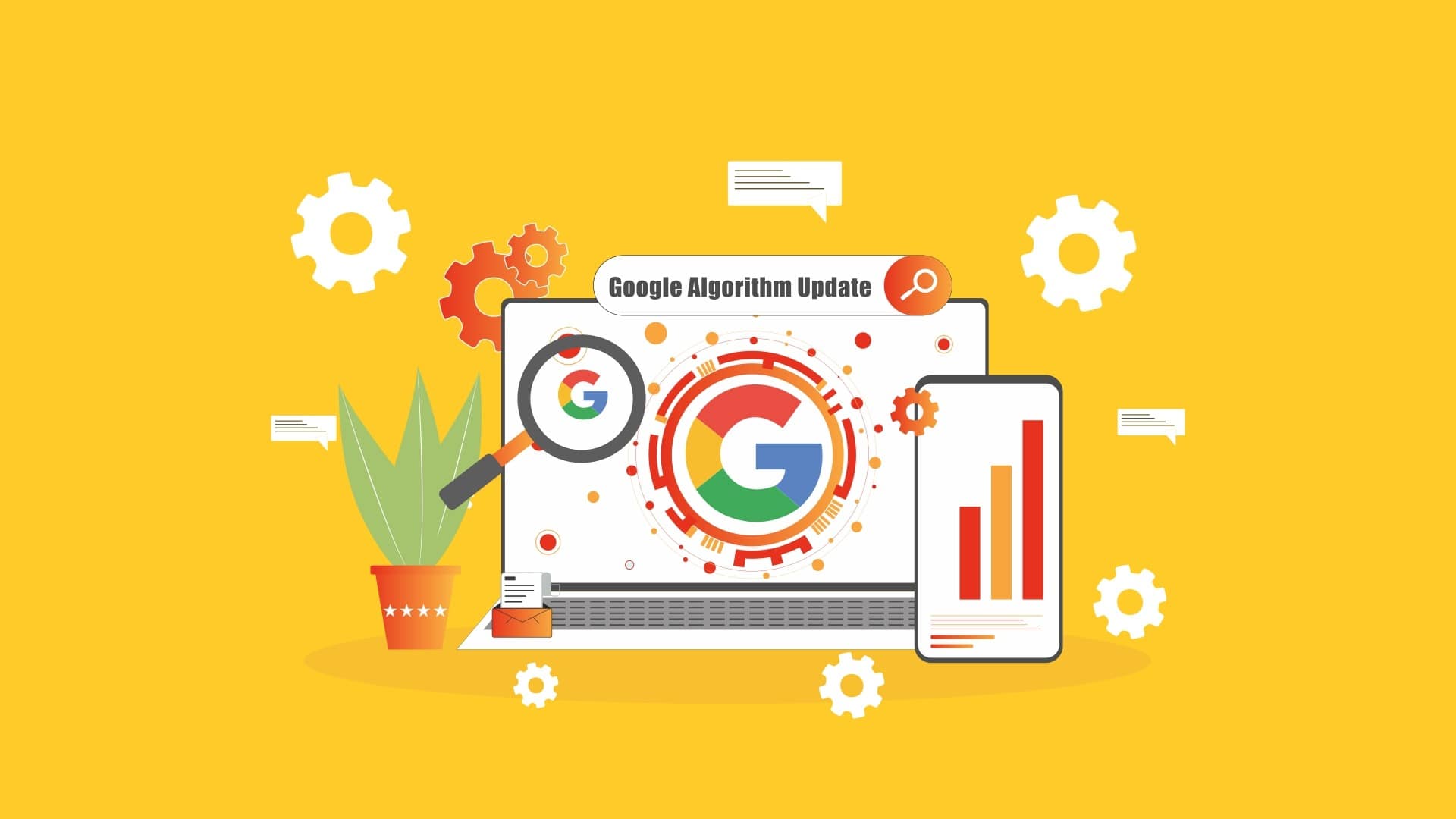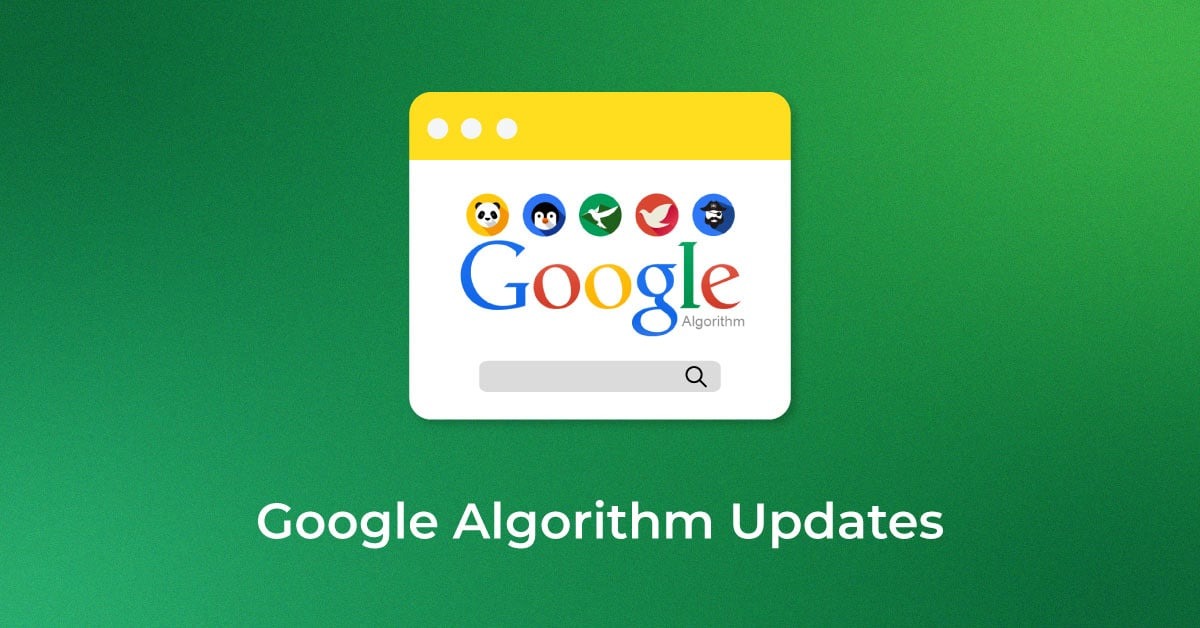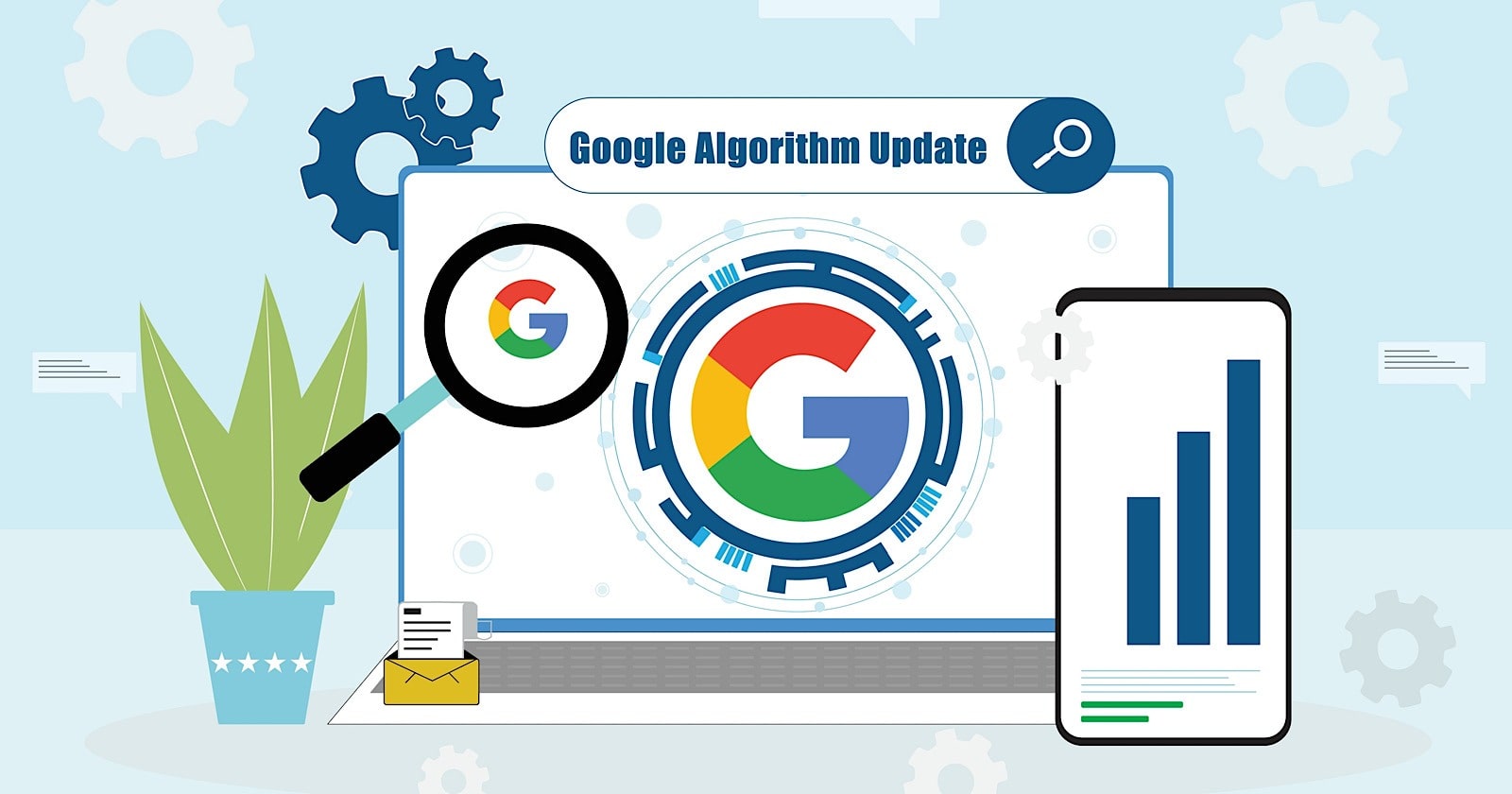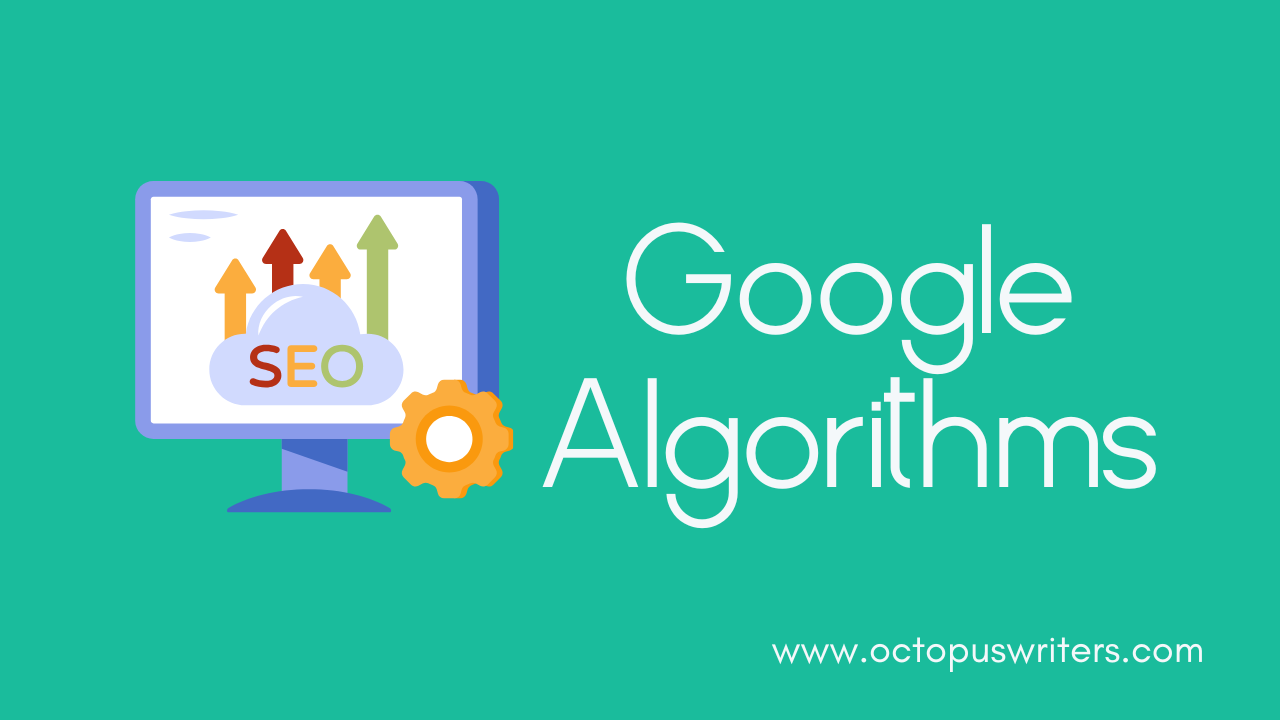The evolution of Google Algorithms has fundamentally changed how websites are ranked. From keyword-based strategies to more advanced algorithms that evaluate user experience and content quality, Google continues to refine how search results are determined. Major updates like BERT, Medic, and Core Web Vitals have introduced new benchmarks for SEO success, forcing webmasters and businesses to adapt.
At OctopusWriters, we’ve studied the most recent shifts in Google Algorithms and compiled this guide to help you navigate these changes. Read on to understand how these updates influence your site’s rankings and discover the best practices for staying visible in an ever-evolving digital world.
What Are Google Algorithms?
Google algorithms are the systems responsible for determining how websites rank in search results. These algorithms process data from web pages and aim to match users with the most relevant, high-quality results based on their search terms.
In essence, Google’s algorithms operate like any other algorithm: they collect and process information before ranking results. For instance, when you search for “cute cat videos” or “shoe stores in Pennsylvania,” Google’s complex system evaluates millions of web pages to provide the most accurate results.
While the exact details of Google’s algorithm are not public, we know a few factors that play a role:
- Keywords appearing in the title, header tags, and meta descriptions.
- The presence of natural backlinks to the page.
- The website’s ability to perform well on mobile devices.
These are just a handful of the factors Google’s algorithm considers when ranking pages, with numerous others influencing the final search results.
What Is A Google Algorithm For Search?
Google’s core algorithm is applied to each search, but it customizes the results based on the query’s specifics. Someone searching for “buy running shoes” will see entirely different results compared to someone searching for “cat videos.” Even slight changes in wording or spelling are enough to alter the results. Afterward, users are presented with tailored options to choose from, all happening incredibly fast.
At OctopusWriters, we understand how crucial this personalization is. Google’s algorithm has evolved to offer not just relevant results, but also predictive suggestions as you type. These suggestions are influenced by browsing history and other personal factors, reflecting the algorithm’s growing sophistication in providing personalized search experiences.
What Is A Google Algorithm For SEO?
As previously mentioned, Google’s algorithm uses keywords as one of the factors when determining search rankings. To rank well for specific keywords, applying SEO techniques is essential, as it helps Google identify the core topic of a webpage.
Years ago, it was common for websites to overload their content with keywords, assuming this would make them rank higher. However, Google soon adjusted its algorithm to penalize such keyword stuffing and other deceptive black hat SEO tactics.
It’s important to avoid using any techniques that aim to outsmart Google’s algorithm. While these tactics might work temporarily, Google will eventually detect them, and your site’s rankings will drop. Focus on following white hat SEO practices to ensure long-term success in search rankings.
Why Are Google Algorithms Important?
At the core of Google’s search functionality are algorithms, which enable the search engine to rank pages and understand the meaning behind search queries. These complex systems work by analyzing keywords, user intent, and other important factors to sort through billions of web pages and deliver accurate results.
Google’s algorithms do much more than match keywords to web pages. They assess content quality, site authority, and even user experience, such as how quickly a page loads or whether it’s mobile-friendly. This comprehensive approach ensures that users get the most relevant and trustworthy results every time they search.
How Does Google’s Algorithm Work?
Google’s algorithm processes and ranks web pages by considering several key factors:
- Meaning: Using advanced language models, Google corrects spelling errors and identifies synonyms to match search queries with the most relevant content. For example, it understands local search intent, like showing nearby cafes when searching for “coffee shops.”
- Relevance: Content relevance is determined by how well it matches the search query. An exact keyword match is a strong indicator of relevance, and user interaction data helps confirm this.
- Quality: Google evaluates the trustworthiness of content by looking at factors like backlinks from reputable sites and content depth. High-quality content is a key indicator of expertise and authority.
- Usability: Websites that are mobile-friendly, load quickly, and offer a good user experience are prioritized in search results. Features like HTTPS and minimal intrusive ads also play a role.
- Context: Google personalizes results by analyzing data like location, search history, and user preferences, ensuring tailored results.

With over 200 ranking factors, content creators should focus on optimizing measurable elements such as:
- Backlinks: The more high-quality backlinks, the more trustworthy your site appears to Google.
- Content Structure: Clear, well-organized content improves user experience and increases the chances of being featured in snippets.
- Meta Descriptions and Alt Text: Optimized meta descriptions and alt text help Google better understand the content.
By focusing on key ranking factors like content relevance, quality, and usability, you can significantly boost your site’s visibility and improve its overall performance in search rankings.
What Algorithms Does Google Use?
It’s likely that Google has several algorithms that haven’t been officially named or disclosed. However, here are the key ones we do know about:
Google Core Algorithm
The Google Core Algorithm serves as the backbone of Google’s search engine, orchestrating how billions of webpages are ranked for any given query. This core system works by integrating several specialized algorithms, each designed to assess factors such as content quality, keyword relevance, and user experience. These components come together to evaluate which pages should appear in the top search results, based on their alignment with user queries.
In addition to this primary function, the core algorithm incorporates algorithms that focus on technical aspects of websites, including site speed, mobile optimization, and HTTPS security. Google frequently updates the core algorithm to ensure that search results reflect current SEO standards and the latest user behavior patterns, keeping the search engine both relevant and effective.
Ranking Algorithm
This algorithm plays a crucial role in determining how pages are ranked on SERPs (Search Engine Results Pages). While many of its ranking factors remain unknown, a few key elements have been confirmed:
- Content quality: High-quality, informative content tends to perform well.
- Core Web Vitals: Metrics like page load time, interactivity, and visual stability influence ranking.
- HTTPS: Sites with secure connections are prioritized.
- Mobile optimization: Websites that work well on mobile devices rank higher.
- Site speed: Fast-loading pages enhance the user experience and improve rankings.
- Links: Internal and external links boost a site’s credibility and authority.
- Anchor text: Descriptive anchor text signals relevance to linked content.
- Geographical relevance: Local search results are influenced by the user’s physical location.
One of the most important updates to this algorithm was the Panda update in 2011, which targeted low-quality content and improved the visibility of high-quality websites.
PageRank
PageRank is an algorithm developed to evaluate a webpage’s importance by analyzing its backlink profile. By considering both the quantity and quality of the external links pointing to a page, it determines the page’s overall influence, helping rank it more effectively in search engine results.
Spam Algorithm
This algorithm is crucial for ensuring that Google’s search results remain accurate and trustworthy by detecting sites that breach Google’s Spam Policies. These sites often attempt to manipulate rankings using unethical methods like buying links or flooding content with irrelevant keywords. Once identified, these pages are either demoted in rankings or removed entirely from Google’s search index.

The Penguin update in 2012 marked a major advancement, targeting sites that exploited spammy SEO tactics to gain an unfair advantage in rankings. By penalizing these manipulative sites, Penguin helped ensure that users would find more authentic, useful content in their search results, promoting fairness in the SEO landscape.
RankBrain
RankBrain is a machine-learning algorithm that helps Google analyze and understand search queries better. An example would be a query like “running shoes for flat feet.” Even if the user doesn’t specify “supportive shoes,” RankBrain identifies that flat feet require extra support and surfaces results with recommendations for supportive footwear designed for this condition. This allows Google to deliver more accurate results, based on user needs rather than exact keyword matching.
Hilltop
Hilltop is an algorithm that helps Google identify relevant and authoritative content for specific keyword searches, particularly for news. Acquired by Google in 2003, Hilltop plays a key role in improving Google News by ranking authoritative documents higher in search results.
The algorithm determines authority by evaluating how many reputable pages link to a given document. This ensures that search results prioritize sources considered trustworthy, making it easier for users to find credible and up-to-date news on any given topic.
8 Major Google Algorithm Updates
While Google tweaks its search algorithm several thousand times annually, most of these changes are too subtle to even notice. Yet, occasionally, Google releases an update so significant that it reshapes the entire approach to SEO.
Here at OctopusWriters, we’ll be walking you through eight of the most influential algorithm updates in history. We’ll explain why these updates were implemented, how they work, and how we’ve adapted our SEO practices in response.
Panda
Google’s Panda update was introduced in 2011 as a game changer for content-focused SEO strategies. Its purpose was clear: to clean up search results by filtering out low-quality content and improving the visibility of valuable pages.
- Key Hazards: Content duplication, thin content, keyword stuffing, and spammy user-generated content.
- How it works: Panda assigns each page a quality score that directly affects rankings. Initially, the effects were subtle, but in 2016, Panda became part of the core algorithm, allowing penalties and recoveries to roll out faster with each update.
- How to adjust: To maintain your rankings, conduct regular site reviews for issues like duplicate or thin content, and keyword stuffing. Using tools like SEO PowerSuite’s Website Auditor can streamline this process.
With the WebSite Auditor’s Content Editor module, you can effortlessly prevent keyword stuffing and ensure your pages are SEO-friendly. This tool analyzes the content of top-performing competitors and provides you with actionable recommendations, helping you optimize your content based on what’s already working well in Google search.
To safeguard against duplicate content, you can use a plagiarism checker to verify that your content is unique and not replicated elsewhere online.
Penguin
Launched on April 24, 2012, Google’s Penguin update reshaped SEO by targeting manipulative link-building practices, improving the integrity of search results.
- Hazards: Spammy or irrelevant backlinks, over-optimized anchor text.
- How it works: Penguin aims to penalize websites with unnatural backlink profiles, particularly those using low-quality strategies like buying links from PBNs or link farms. The update was designed to eliminate shortcuts in SEO, rewarding sites with natural, organic backlinks.
- How to adjust: To protect your site from Penguin’s penalties, consistently audit your backlink profile. Use a tool like SEO SpyGlass to monitor link growth and detect any sudden spikes that could signal negative SEO attacks. The tool’s dashboard offers a clear overview of your link profile’s progress, allowing you to respond quickly to any irregularities.
The factors used by Penguin are reflected in the Penalty Risk formula within SEO SpyGlass. Head to the Penalty Risk tab and arrange your backlinks from highest to lowest risk. If any links show a risk above 50%, investigate them. Malicious links should be added to your disavow file, which can be downloaded and submitted to Google’s Disavow Links Tool.

Hummingbird
The Hummingbird update, introduced on August 22, 2013, marked a new era in Google Algorithms, shifting from exact keyword matching to understanding search intent. This change enabled Google to deliver more relevant results by analyzing the meaning behind user queries.
- Hazards: Keyword stuffing, low-quality or overly optimized content.
- How it works: The update focuses on natural language processing, allowing Google to understand the intent behind a query rather than just the specific words used. This means a page can still rank well even if it doesn’t include the exact terms searched for. Techniques like latent semantic indexing and recognizing synonyms play a key role.
- How to adjust: Focus on creating content that reflects broader themes and ideas rather than stuffing specific keywords. Utilize tools such as Google’s “Related Questions” and Rank Tracker’s Keyword Research module to expand your understanding of related terms and searcher intent. This will help you produce content that is both SEO-friendly and user-focused.
Utilize these insights to gain a clearer understanding of how your audience communicates and broaden the scope of your content. By developing well-rounded, informative content that meets the needs of searchers, you’ll enhance both user engagement and your SEO performance.
Mobile
With the rise of mobile browsing, Google has emphasized the importance of mobile optimization in search rankings. Ensuring your website performs well on mobile devices is now critical for SEO success.
- Date: April 21, 2015
- Hazards: Lack of mobile-friendly design; poor mobile usability.
- How it works: Beginning with this update and reinforced by changes in 2018 and 2020, Google now ranks websites primarily based on their mobile performance. The speed and user experience of the mobile version of a site are key ranking factors.
- How to adjust: Focus on optimizing your website for mobile devices, prioritizing speed and ease of use. Use Google’s mobile-friendly and page speed tools, which are integrated into WebSite Auditor, to check and improve your site’s mobile performance during a full audit.
RankBrain
The launch of RankBrain in 2015 marked a pivotal moment in the evolution of Google Algorithms, making search results smarter and more context-aware. By using machine learning, Google could better understand and interpret user queries beyond simple keyword matching.
- Date: October 26, 2015
- Hazards: Lack of query-specific relevance, shallow content, poor user experience (UX).
- How it works: RankBrain is part of Google’s Hummingbird algorithm and focuses on deciphering the intent behind search queries. Google uses RankBrain to factor in broader contexts, such as synonyms, implied meanings, and personal search histories, making it one of the top three ranking factors today. This allows pages to rank even when they don’t contain the exact search terms but meet the user’s intent.
- How to adjust: To stay competitive, focus on creating content that’s both comprehensive and highly relevant to your audience. Leverage tools like WebSite Auditor’s TF-IDF to analyze the terms used by top-performing competitors. Incorporating these terms into your content will help you stay aligned with RankBrain’s focus on relevance and depth.
RankBrain emphasizes the importance of creating content that truly meets user intent. By keeping relevance and quality at the forefront of your SEO strategy, you’ll be better positioned to succeed in Google’s evolving search landscape.
Medic
In May 2018, Google rolled out the Medic update, significantly affecting websites that provide life-impacting information, known as YMYL (Your Money or Your Life) sites. The update emphasized the importance of authority, expertise, and trustworthiness.
- Date: May 4, 2018
- Risks: Insufficient authority on YMYL websites; weak E-A-T signals.
- How it works: The Medic update primarily impacted medical, financial, legal, and educational websites. While Google hasn’t fully detailed the update’s mechanics, it’s widely believed that it strengthened the role of E-A-T (Expertise, Authority, Trust) in determining rankings for these types of sites.
- How to adapt: To recover from this update, many SEOs suggest improving the credibility of your content by working with expert contributors. Building brand authority through strong backlink profiles is also essential. Using tools like SEO SpyGlass can help you find link-building opportunities by identifying high-authority sites already linking to your competitors.
SEO SpyGlass helps pinpoint potential backlinks by analyzing where your competitors are being linked, especially from high-authority sites that are active in your niche.
Bert
The BERT update from Google in 2019 marked a significant leap forward in search engine optimization, emphasizing the importance of user intent and contextual relevance in search results.
- Date: October 22, 2019
- Risks: Poorly crafted content, lack of focus, and inadequate context.
- How it works: By employing natural language processing, BERT enables Google to interpret queries beyond just keywords. It identifies relationships between words and entities to provide more relevant results. This update builds upon previous changes like Panda and RankBrain, enhancing Google’s ability to interpret meaning and context.
- How to adjust: To adapt, ensure your content is clear and user-focused, using relevant terms and concepts that add context and depth. Avoid keyword stuffing and instead, concentrate on creating meaningful content that matches user intent.

BERT is a step forward in refining search results based on context. Creating content that aligns with these new standards will improve both user satisfaction and search visibility.
Core Updates
Since 2017, Google’s core updates have become routine but remain largely ambiguous. These updates are designed to improve search quality but are not always fully explained to the public.
- Date: 2017–present
- How it works: Beginning in 2017, Google started releasing core updates without much transparency. While SEOs track changes in search rankings after these updates, it’s hard to pinpoint specific causes. Core updates are often believed to fine-tune previous updates or combine several smaller changes at once.
- How to adjust: Due to the vague nature of core updates, tracking your site’s performance across target keywords is essential. Analyze ranking movements, especially those of your competitors, after an update to gauge potential factors at play.
To begin tracking SERP history, launch Rank Tracker, navigate to Target Keywords > Rank Tracking > SERP Analysis, and enable Record SERP data to follow your top keywords.
The goal of Google’s Algorithm Updates
The goal of Google’s algorithm updates is to enhance search result relevance and quality for users. OctopusWriters recognizes that Google is committed to helping users find the most reliable and helpful information for their queries. Google achieves this by continuously improving its algorithms to better understand web content, with a strong focus on content quality, website security, and overall user experience.
Each update helps Google better evaluate content, allowing it to prioritize pages that are not only informative but also optimized for user engagement, mobile devices, and security protocols. This ongoing effort ensures users always receive the best results.
Key Components of Google’s Algorithm Updates
To deliver the most relevant and trustworthy search results, Google continuously updates its algorithms. These updates are designed to promote content that offers real value, improves the user experience, and ensures web security. Important factors include:
- Content Quality and Relevance: Websites that produce original, valuable, and well-researched content are more likely to rank well in Google’s search results.
- User Experience (UX): Page speed, mobile optimization, and smooth navigation are essential for better user engagement, which Google rewards with higher rankings.
- E-A-T (Expertise, Authoritativeness, Trustworthiness): Google evaluates content based on the expertise of its creators and the overall credibility of the site, especially for YMYL (Your Money or Your Life) topics.
- Security and Privacy: Sites that implement robust security features like HTTPS encryption are preferred, ensuring that user data is protected.
- Technical SEO: A well-structured website with optimized SEO elements, such as structured data and canonical tags, enables better crawling and indexing by Google.
Practical Implications Of Google’s Algorithm Updates
For Webmasters And SEO Professionals
In today’s SEO landscape, staying competitive means adapting quickly to new algorithm changes.
- Continual Learning: SEO professionals must remain proactive in learning about Google’s frequent updates. Understanding how each update affects rankings helps professionals refine their strategies.
- Routine Website Audits: Regular audits help webmasters identify areas where improvements are needed, such as content quality, technical SEO, and mobile-friendliness, ensuring sites are optimized.
- User-Centered SEO: Focusing on user intent and providing relevant, targeted content is a crucial aspect of SEO success. Aligning strategies with what users are actually searching for leads to improved rankings.

For Content Creators
Content creators need to align their output with what Google values most: quality and relevance.
- Creating Engaging Content: Content creators should focus on producing high-quality, well-researched material that speaks directly to the audience’s needs and interests. Originality and depth are critical.
- Staying Agile: As Google adjusts its standards, content creators should revisit and update existing content to keep it aligned with current SEO best practices. Regular updates ensure the content stays competitive and valuable.
In the fast-paced world of SEO, creators who consistently deliver valuable and up-to-date content are the ones who will thrive in the ever-evolving search landscape.
How Does Google Determine Which Elements Matter The Most?
Google’s algorithm assigns a numerical value to each trait it analyzes on a webpage, from content relevance to page speed and user experience. These values are totaled, and the pages with the most valuable traits climb higher in the rankings.
Because these calculations happen in real-time, rankings can shift quickly. At OctopusWriters, we understand that web developers often modify their pages to improve SEO, which can result in movement up or down in search rankings. A page that ranks third today could easily jump to the top or fall to lower positions depending on adjustments made to the page and its competitors.

The fluidity of these rankings highlights the importance of ongoing SEO efforts. Websites that consistently optimize their content and performance are more likely to secure top positions in Google’s search results.
What Does The Future Hold For The Google Algorithm?
Google’s algorithm is continually evolving, with many changes occurring behind the scenes. The company rarely announces small updates, but these can still have subtle effects on page rankings. Major changes, like broad core updates, are often more visible and can lead to significant shifts in how websites perform in search results. Staying on top of these changes without overreacting to minor adjustments is key to maintaining a strong SEO strategy.
Rather than trying to decode every algorithm tweak, focus on what really matters: producing high-quality content and improving user experience. At OctopusWriters, we advise that SEO efforts should revolve around delivering value to visitors. Google’s algorithm is designed to prioritize sites that offer relevant and engaging content, so the best approach is to continuously refine your website’s content, ensuring it stays fresh and useful.
Websites that optimize for user satisfaction are often rewarded with higher rankings. Factors like fast page loading, easy navigation, and relevant information can make a big difference in how Google views your site. Instead of chasing quick SEO fixes, invest in long-term strategies that cater to user needs and align with Google’s focus on relevance and quality.
If you need help optimizing your website, our team at OctopusWriters is ready to assist. We specialize in crafting SEO strategies that are built for sustainable growth, helping your site rank better and attract more organic traffic.
Frequently Asked Questions About Google Algorithms
Are Penguin, Panda, And Hummingbird Google Algorithms?
Penguin, Panda, and Hummingbird are often mistakenly called Google search algorithms. In reality, they are the codenames for key updates that altered Google’s existing algorithms, refining how websites are ranked and evaluated.
What Is The Purpose Of Google Algorithm?
Google’s algorithm organizes and ranks web pages to provide the most relevant and useful information for search queries. It considers factors like content quality, relevance, and user experience to ensure accurate and valuable results.
Is The Google Algorithm Secret?
Over the years, Google has made adjustments to its algorithm, but much like any company safeguarding its key competitive advantage, it has kept the exact workings of the system a well-guarded secret.
How Often Does Google Change Its Algorithm?
Google is believed to update its algorithm around 500 to 600 times annually. The majority of these changes are minor, with little effect on search results. However, larger updates, such as BERT or Passage Ranking, have the potential to influence a vast number of keyword searches and rankings.
How Many Signals Does Google Algorithm Have?
Google’s algorithm processes more than 200 signals to rank content. These signals consider a wide range of aspects, from the freshness and depth of content to the trustworthiness of the website and the quality of backlinks. Factors such as page load speed, mobile optimization, and user engagement metrics also play a significant role in determining ranking positions.
How Does Google’s Algorithm Impact SEO In 2024?
In 2024, Google’s algorithm continues to impact SEO by placing greater emphasis on content quality, user experience, and technical factors. Key updates include:
- Content Quality: Google places more value on content that demonstrates expertise, authority, and trustworthiness (E-E-A-T). Websites with well-researched, authoritative, and user-focused content tend to rank higher. AI-generated content is under increased scrutiny to ensure it meets Google’s standards of accuracy and reliability.
- User Experience and Core Web Vitals: Factors like page speed, mobile-friendliness, and overall site usability remain crucial. In 2024, websites delivering seamless, fast user experiences across all devices are prioritized.
- Relevance and Search Intent: Google’s algorithm has become more adept at understanding the intent behind search queries. This shift towards semantic search makes long-tail keywords more important for aligning content with user intent.
- Video SEO: Google is increasing its focus on video content in search rankings. Optimizing video titles, descriptions, and adding captions has become essential for SEO strategies to ensure better visibility.

Google’s 2024 algorithm heavily rewards sites that prioritize user-focused, high-quality content and mobile optimization. Sites failing to meet these standards may experience a drop in rankings.
Conclusion
Google Algorithms serve as the backbone of search engine optimization, guiding how websites are ranked and presented to users. By focusing on high-quality content, optimizing for user experience, and adapting to key algorithm changes, you can ensure your site performs well. OctopusWriters encourage you to stay informed about these developments and continue refining your strategy to meet Google’s evolving standards. Thank you for joining us on this journey, and don’t hesitate to reach out if you need further assistance with your SEO efforts.

